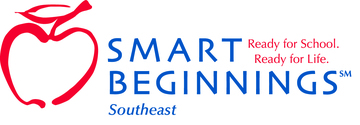Nurturing Learning series
Can one-year-olds truly be creative? If we step away from artistic expressions of creativity for a moment and just think about the essence of creativity, the answer is a loud “Yes!”
When you think about art with two-year-olds, think about how to create meaningful art experiences that fit well in the busy world of twos.
During the preschool years, young children blossom in their ability to experiment with new ideas, including new ways of creating with art materials.
The most obvious of all of the many remarkable changes between a child’s first and second birthday is that they begin talking. As exciting as those first words are, though, they are only a slice of the language gains that one-year-olds make.
Verbal communication between or with twos needs a lot of support to succeed, especially when there is a conflict of wills. But twos feel excited and powerful when they’ve succeeded in using words to connect with a friend or caregiver in a meaningful way.
The ages of three and four are busy times for language and literacy learning, including developing the ability to comprehend and tell narratives, becoming much more skilled at conversation, and beginning to understand the mechanics of written language.
By the time babies have reached their first birthday, they have logged thousands of hours of watching, listening, touching, tasting and smelling everything around them, as their rapidly developing brains have been noticing differences between things.
The age of two in children can be trying for caregivers, but it’s also an age in which children are gaining a remarkable amount of knowledge about how the world works.
Preschoolers are rapidly developing the mental abilities to think in mathematical and scientific ways in order to explore and understand their favorite topics.
Play is the central activity of young children and is the main way that young children explore, interact with, and enjoy the world around them, whether it’s an infant playing with her toes or a five-year-old playing superhero.
What does play look like in two-year-olds, and how can caregivers support their inborn curiosity and creativity?
Play is self-directed, pleasurable, internally motivated activity that children control. How caregivers support it depends on the age of the child.
Early Screening Essential to Support Child Development The statistics on the prevalence of autism sometimes seem like a timer ticking down to zero. When I got into the field of disabilities 13 years ago, the suggested prevalence was 1 in 150 children. Then we ticked down to 1 in 100. In 2012, it was 1 in 88. The latest word from the U.S. Centers for Disease Control and Prevention is 1 in 68 children in the U.S. have an autism spectrum disorder. That comes out to about 1.2 million children younger than 21 Click Here To Read More
Mind in the Making: The Seven Essential Life Skills Every Child Needs
This wonderful book by Ellen Galinsky has a website connected to it that has amazing resources such as tip sheets to connect life skills to literacy. See below. Can The Hungry Caterpillar or Five Little Ducks help teach children about life skills? We think so. Mind in the Making today announces a ground-breaking initiative with First Book, a nonprofit social enterprise that provides new books and educational materials to children in need, including an unprecedented collection of children’s books that teach how to promote the seven essential life skills. The initiative includes a series of FREE tip sheets compiled by the Institute as companion pieces to this collection of popular children’s books. Educators and families can use the books – whether they already have them at home, or get them from the library – and the tips sheets to promote life skills based on executive functions of the brain, such as focus and self control, as they read along with kids. (The books are also available at discounted rates to qualified educators and early childhood providers who work with children in need through First Book’s Marketplace.) The tip sheets are available at NO COST to anyone who wants them and can be downloaded here.
Teach Preschool: The name game
You’ve probably all heard of the old song “The Name Game” that goes “Shirley, Shirley, bo birley, banana fanana fo firley, fee fi fo mirley, Shirley.” Well, this name game is a little different, but just as much fun I assure you! This simple game is a great way to practice name recognition; CLICK HERE TO SEE THIS GAME
Teach Preschool: Using pretend versus real tools in preschool – let’s talk about it
Teach Preschool
John Tyler Community College
Early Childhood Programs of Study
http://www.jtcc.edu/academics/
Family Education Program

Help Your Family Grow!
Since Fiscal Year 2001, when the Family Education Program was created, CHS has provided more than 20 million items to over 39 thousand agencies. Last year alone, CHS reached out to over 1,300 agencies, providing valuable educational materials including our Family Education Brochure Series, Activity Book for Children, Character Growth Chart, and Development Stages Wheel. Click Here For More Information.
New VA Foundation Blocks for Early Learning
The Department of Education has published numerous documents to help you provide age appropriate activities for the children in your care. Click here for VDOE website.
Early Childhood Consultant
Yolanda Satchell is a contractual early childhood consultant, and we are happy to have her services available to First Connections VA as a VSQI Rater & Mentor, as well as CDA Course Instructor and trainer. She is the founder of the early childhood organization known as P.A.C.E. (Professional Advising & Career Empowerment). As a CDA Program Specialist, she is available to assist you with your Child Development Associates (CDA) credential questions. Contact her at (804)721-8536 or pace2u@comcast.net for complete program information and CDA assistance.


